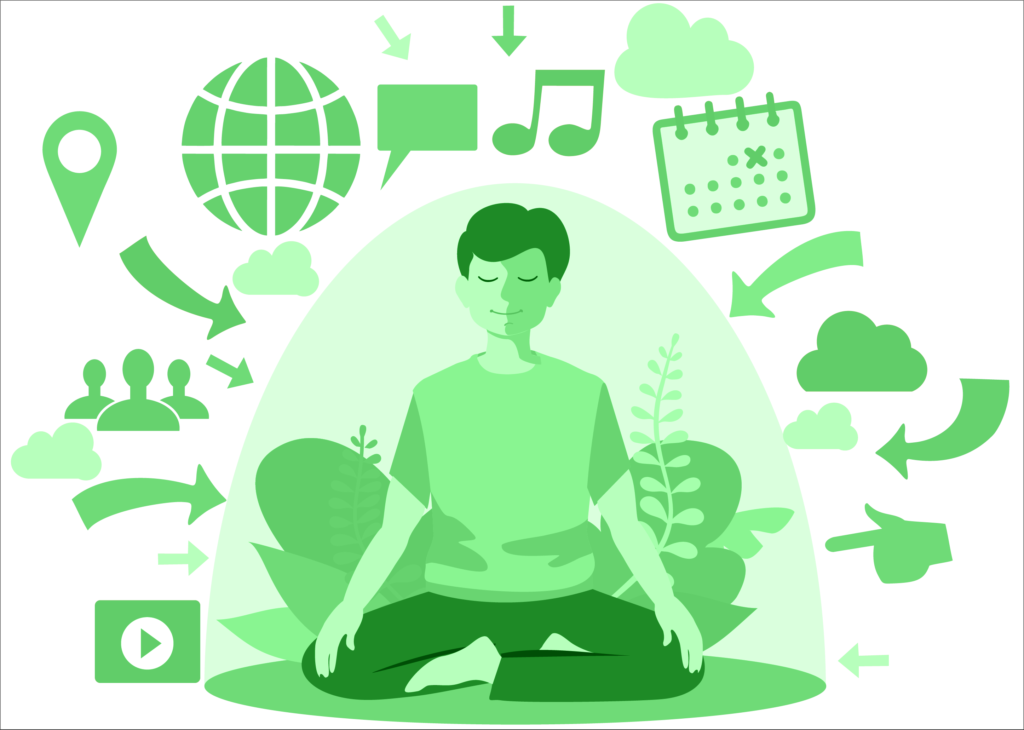Discover Effective Methods on How to Meditate? for Beginners
Discover Effective Methods on How to Meditate? for Beginners
Blog Article
How to Meditate: A Step-by-Step Technique to Getting Mindfulness and Calmness
Reflection functions as an effective tool for accomplishing mindfulness and psychological calm in a fast-paced globe. By understanding the essential concepts and techniques associated with reflection, individuals can grow a technique that boosts their general wellness. This conversation will lay out necessary steps, from creating a conducive environment to integrating reflection into day-to-day routines. As we explore these components, it ends up being clear that the trip to mindfulness is not simply regarding the act of resting in silence, yet rather concerning fostering a deeper connection with oneself and the world around us. What might this transformation entail?
Understanding Meditation
Comprehending reflection includes comprehending its essential concepts and methods, which act as the structure for the technique. At its core, meditation is a psychological workout focused on promoting leisure, developing internal energy, and developing concern and understanding. The practice motivates people to concentrate their interest, commonly through strategies such as deep breathing, visualization, or concept repeating.
Meditation can be categorized right into different designs, including mindfulness, transcendental, and loving-kindness meditation, each with unique purposes and approaches. Mindfulness reflection emphasizes present-moment awareness and non-judgmental monitoring of feelings and ideas, while transcendental reflection involves the use of particular mantras to transcend common thought processes. Loving-kindness meditation concentrates on creating a perspective of love and empathy in the direction of oneself and others.
No matter of the technique used, the primary goal remains constant: to grow a much deeper understanding of the mind and its patterns. This self-awareness cultivates psychological resilience, clarity of idea, and an extensive feeling of tranquility (How to meditate?). By understanding these methods and concepts, individuals lay the groundwork for an effective meditation practice that can significantly enhance their overall well-being
Planning For Your Technique
Prior to beginning your meditation method, it is necessary to produce a setting favorable to focus and relaxation. Make sure that the area is tidy and totally free of mess, as a tidy environment can help remove the mind.
Take into consideration the illumination, as natural light can boost your mood and energy. Soft, warm illumination is typically more calming than rough fluorescent lights. Additionally, select a comfy temperature, making certain that you are neither too warm nor also chilly.
Integrating aspects that promote tranquility can better improve your experience. This might consist of soft pillows or coverings for convenience, in addition to relaxing aromas from vital oils or incense. It can likewise be helpful to have a timer established for your meditation session to prevent disturbances from clock-watching.
Fundamental Meditation Methods

Another effective strategy is body check reflection. This entails mentally checking your body from head to toe, seeing any kind of areas of stress or pain and knowingly unwinding those muscle mass. This technique fosters a deeper connection between your mind and body.

Last but not least, loving-kindness reflection concentrates on growing compassion in the direction of on your own and others. Silently repeat expressions of goodwill, boosting psychological well-being and interconnectedness. Each of these techniques serves as a structure for your reflection trip, allowing you to locate the approach that reverberates finest with your individual technique.
Maintaining Focus and Mindfulness

Developing a committed reflection room can improve the ability to keep mindfulness. A Discover More quiet, clean setting reduces disturbances, enabling much deeper immersion in the technique. Furthermore, setting a time frame can help handle assumptions; beginning with much shorter sessions might alleviate the shift into longer methods.
Using methods such as body scanning or observing sensations can also boost mindfulness. These approaches urge professionals to stay present and engaged with their physicality, securing their attention in the moment. Routine method is essential; the mind constructs durability in time, developing a stronger capacity for focus.
Incorporating Meditation Into Every Day Life
Integrating meditation into day-to-day live can change regular tasks into possibilities for mindfulness and self-reflection. By integrating mindfulness methods into usual tasks, individuals can cultivate a better sense of existence and peace among the busyness of daily life.
Begin by identifying moments throughout your day where you can practice and stop mindfulness. Also mundane tasks like strolling or washing recipes can come to be chances for reflection by guiding your focus to the experiences of movement and the sounds surrounding you.
Furthermore, establishing apart devoted times for meditation can reinforce its practice. Begin with brief sessions, gradually increasing duration as you become more comfortable. Use suggestions or hints-- like a certain time of day or a calming audio-- to develop uniformity.
Eventually, the objective is to weave mindfulness into the textile of life, allowing you to approach each moment have a peek at these guys with intention, thereby enhancing your overall feeling of well-being and clarity.
Conclusion
Finally, reliable reflection calls for a silent atmosphere, a comfortable placement, and a concentrate on the breath. By enabling thoughts to develop without judgment and regularly rerouting attention to the breath, professionals can attain enhanced mindfulness and peace. Integrating various techniques, such as body scanning and loving-kindness phrases, can further enrich the method. Normal reflection, also briefly sessions, fosters a deeper link to the existing moment, inevitably resulting in better calmness and mental clearness in day-to-day live.
Reflection can be categorized into different styles, including mindfulness, transcendental, and loving-kindness reflection, each with distinctive functions and methodologies. Mindfulness reflection highlights present-moment recognition and non-judgmental monitoring of feelings and ideas, while copyright involves the page usage of certain concepts to transcend ordinary thought processes.With your reflection space prepared, it's time to explore different fundamental meditation techniques that can aid cultivate mindfulness and internal peace.Constantly keeping focus and mindfulness throughout reflection can be tough, particularly for those brand-new to the technique.Developing a devoted meditation room can boost the ability to preserve mindfulness.
Report this page